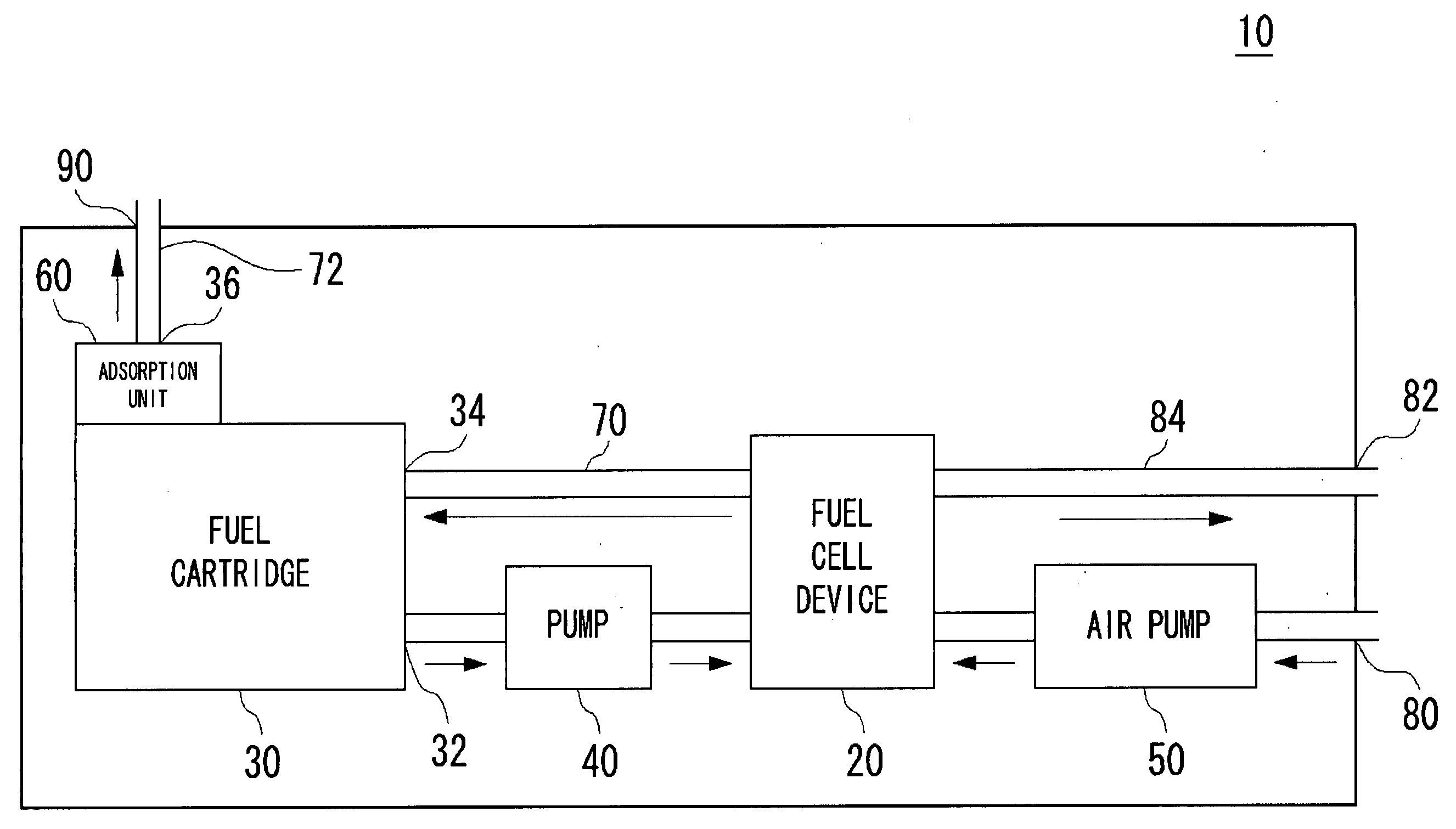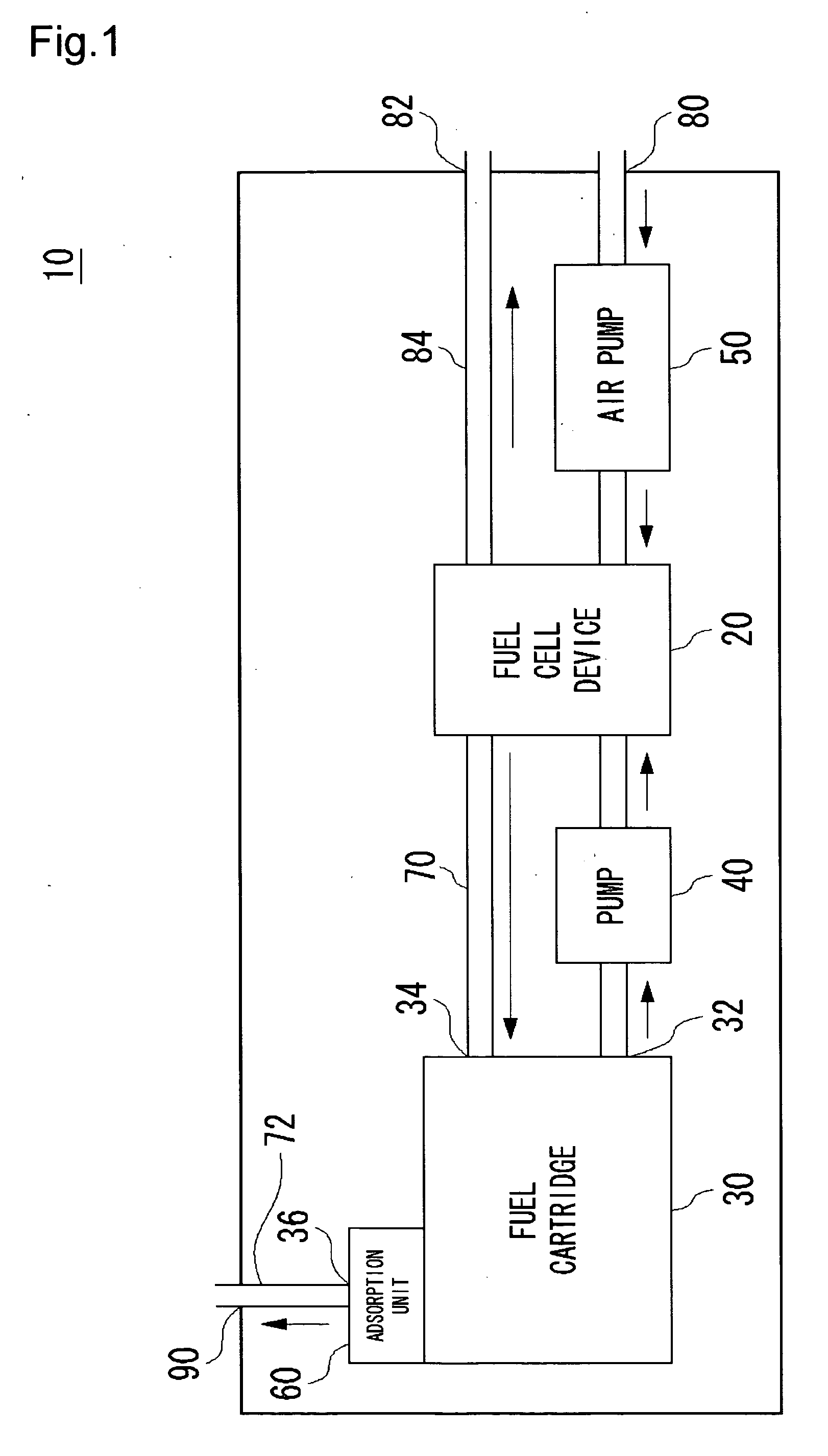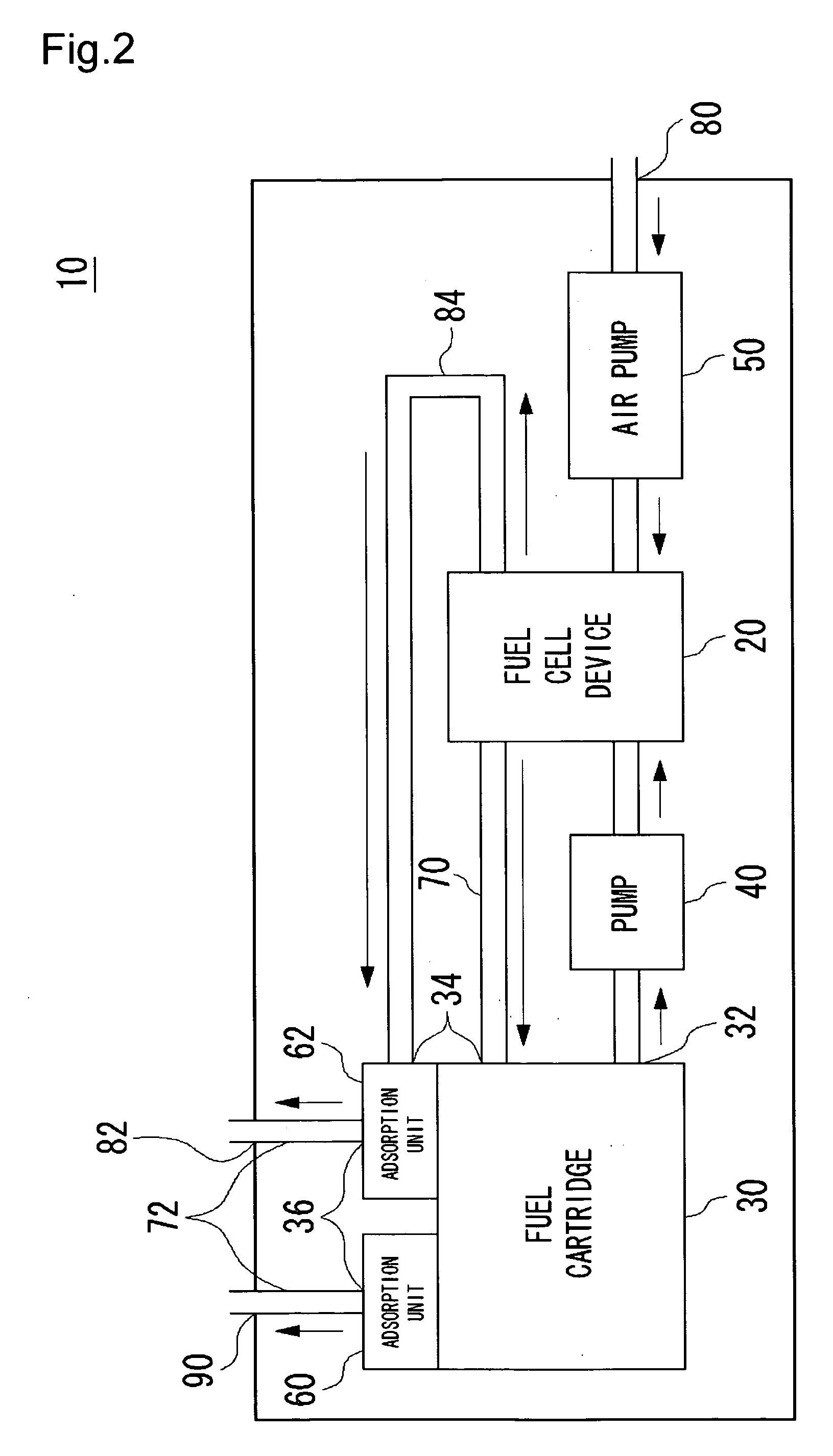Fuel cell system and fuel feeder
a fuel cell and feeder technology, applied in the direction of liquid degasification, separation processes, electrochemical generators, etc., can solve the problems of excessive harmful substances, reduce the amount of harmful substances discharged, and effectively adsorb the
- Summary
- Abstract
- Description
- Claims
- Application Information
AI Technical Summary
Benefits of technology
Problems solved by technology
Method used
Image
Examples
embodiment 1
[0022] Embodiment 1
[0023]FIG. 1 shows a general structure of a fuel cell system 10 according to Embodiment 1. The fuel cell system 10 comprises a fuel cell device 20; a fuel cartridge 30 as an example of a fuel feeder for feeding a liquid fuel to the fuel cell device 20; a pump 40 for diluting the liquid fuel in the fuel cartridge 30 and feeding it to the fuel cell device 20; an air pump 50 for feeding air to the fuel cell device 20; and an adsorption unit 60 for adsorbing harmful substances. The fuel cell device 20 comprises a stack in which a plurality of a membrane electrode assemblies (hereinafter, referred to as “MEA”) consisting of a cathode and an anode layers and a proton-conductive solid polymer electrolyte film such as Nafion® between them are laminated via a conductive separator. An unreformed liquid fuel such as alcohols (e.g., methanol and ethanol) and ethers is directly fed to an anode (fuel electrode) in the MEA, while air is fed to a cathode (air electrode) of the ME...
embodiment 2
[0032] Embodiment 2
[0033]FIG. 2 shows a general structure of a fuel cell system 10 according to Embodiment 2. The fuel cell system 10 of this embodiment comprises, in addition to the fuel cell system 10 of Embodiment 1 shown in FIG. 1, an additional adsorption unit 62 in a vent 82 in the air electrode side. The other components are as described for Embodiment 1 and corresponding components are denoted by the same symbols.
[0034] As described above, an organic liquid fuel may move through a solid polymer electrolyte membrane toward the air electrode side, also generating harmful substances in the air electrode side. Therefore, in this embodiment, there is disposed the adsorption unit 62 integrally formed with the fuel cartridge 30 between a tubing 84 from the air electrode and the vent 82. It can properly treat a trace amount of harmful substances generated in the air electrode to prevent them from being discharged from the system. Thus, a safer fuel cell system 10 can be provided. T...
embodiment 3
[0036] Embodiment 3
[0037]FIG. 3 shows a general structure of a fuel cell system 10 according to Embodiment 3. The fuel cell system 10 of this embodiment has a structure as described in Embodiment 2 shown in FIG. 2, except that the adsorption unit 60 also serves as the adsorption unit 62. The other components are as described for Embodiment 2 and corresponding components are denoted by the same symbols.
[0038] In this embodiment, a tubing 84 in the air electrode side is connected to the adsorption unit 60 and a gas exhausted from the air electrode in the fuel cell device 20 is discharged from a vent 90 through the adsorption unit 60. Thus, a safe fuel cell system 10 can be provided. Furthermore, since adsorption unit 60 also serves as the adsorption unit 62, the structure may be simplified to make the fuel cartridge 30 more compact and lighter.
PUM
| Property | Measurement | Unit |
|---|---|---|
| adsorption | aaaaa | aaaaa |
| electric power | aaaaa | aaaaa |
| energy | aaaaa | aaaaa |
Abstract
Description
Claims
Application Information
 Login to View More
Login to View More - R&D
- Intellectual Property
- Life Sciences
- Materials
- Tech Scout
- Unparalleled Data Quality
- Higher Quality Content
- 60% Fewer Hallucinations
Browse by: Latest US Patents, China's latest patents, Technical Efficacy Thesaurus, Application Domain, Technology Topic, Popular Technical Reports.
© 2025 PatSnap. All rights reserved.Legal|Privacy policy|Modern Slavery Act Transparency Statement|Sitemap|About US| Contact US: help@patsnap.com



